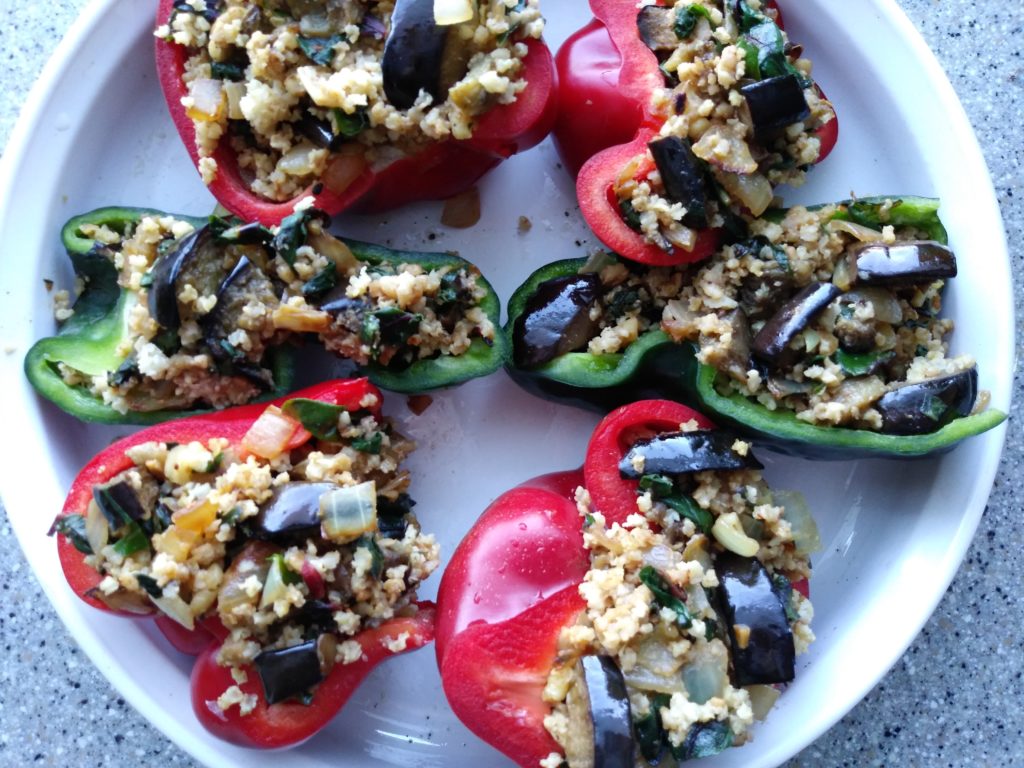
Note: This recipe is part of a series on Alzheimer’s, a disease that can lurk for 10 to 20 years before the symptoms show up. Yet research is beginning to show that we can indeed take action right now to reduce our risks through—you guessed it!—eating better, which includes eating lots of greens.
How to Add Greens to Dinner Tonight Greens have no lack of nutritional benefits, so it’s no surprise that they are showing benefits even for Alzheimer’s, one of today’s most intractable diseases. A recent article in Brain & Life Magazine reports that a diet which “emphasizes the consumption of leafy greens, whole grains, berries, fish, and beans could reduce their risk of Alzheimer’s disease by as much as 53 percent.” (1)
But it does absolutely no good to just know about the risk-reducing benefits of eating better. As long as that knowledge stays trapped in your head, it does your body no good. You need to DO good eating advice to reap its health benefits. (A practical exploration of this topic can be found in the podcast also included in this series.)
So in the vein of DOING good eating and not just reading and knowing
about it, here’s a practical tip:
Color everything with a little green!
In other words, what dish can’t benefit from a little extra added green?! But don’t think you have to use gobs of green, especially not so much it would throw off the balance and essence of a dish—or be overwhelming to you or those at your table. And remember to chop greens well so they integrate nicely into the dish and you don’t get a mouthful of big gangling leaves!
A Perfect Example: Adding Greens to Stuffed Peppers I used this tip last night when making stuffed peppers, a fall favorite because some of Summer’s super sweet and flavor-full peppers are still kicking around, yet it’s also cold enough to turn on the oven. That’s my sweet spot for making stuffed peppers.
The last of Summer’s eggplant are also still around . . . so what about combining some with walnuts and millet for the stuffing? (You might remember one autumn resolution “seed” I planted last fall was occasionally replacing brown rice with millet. Planning is how you make a seed grow!)
With my plan in place, I started sautéing the onion-garlic-and-ginger flavor base, but then it struck me: As planned, my dish didn’t include any greens. Horrors! So in goes some of the chard I harvested before a big snowstorm a couple days ago.
Voila! Just that easily, I’ve gotten more greens into my daily diet. That’s how it’s done. Just throw greens in almost any dish you’re making. Once cooked, they are generally mild enough that you’ll barely notice them–but your body will be grateful.
An Odd-Looking “Recipe” Does the recipe below look a little odd? That’s because I teach “system cooking,” where we learn interchangeable parts and then mix and match to make hundreds of great dishes, no sweat. So if any part of this “recipe” is mystifying, join in my Cook Happy | Live Healthy program. You’ll learn to demystify cooking, all about real food ingredients, how to prep vegetables and then how to execute the cooking steps–easily, intuitively and stress-lessly.
Walnut and Eggplant Stuffed Peppers (with added greens)
Step 1 Slice and roast 1 medium-sized globe eggplant, then cut into 1″ pieces (about 1 1/2 cups)
Step 2 Saute in 1 Tbsp. neutral oil
- 1 med. onion
- 2-3 cups chard leaves chopped to about 1″ square
- 1/2 cup chopped walnuts
- 1-2 Tbsp. minced garlic
- 1 Tbsp. grated fresh ginger
Step 3 Stir eggplant into onion mixture, along with
- 2 cups cooked millet, lightly packed
- 1 Tbsp. yellow/white miso blended with 2-3 Tbsp. hot water
- 1/2 to 1 tsp. Shichimi, to taste
- 2-3 Tbsp. water
Step 4 Stuff filling into
- 3 large peppers (I used red bell peppers and poblanos, but green bells will also work)
Step 5 Bake, covered, at 375 (F) for about 40 to 60 minutes until peppers are tender but not mushy, and filling is cooked through and a little crispy on top.